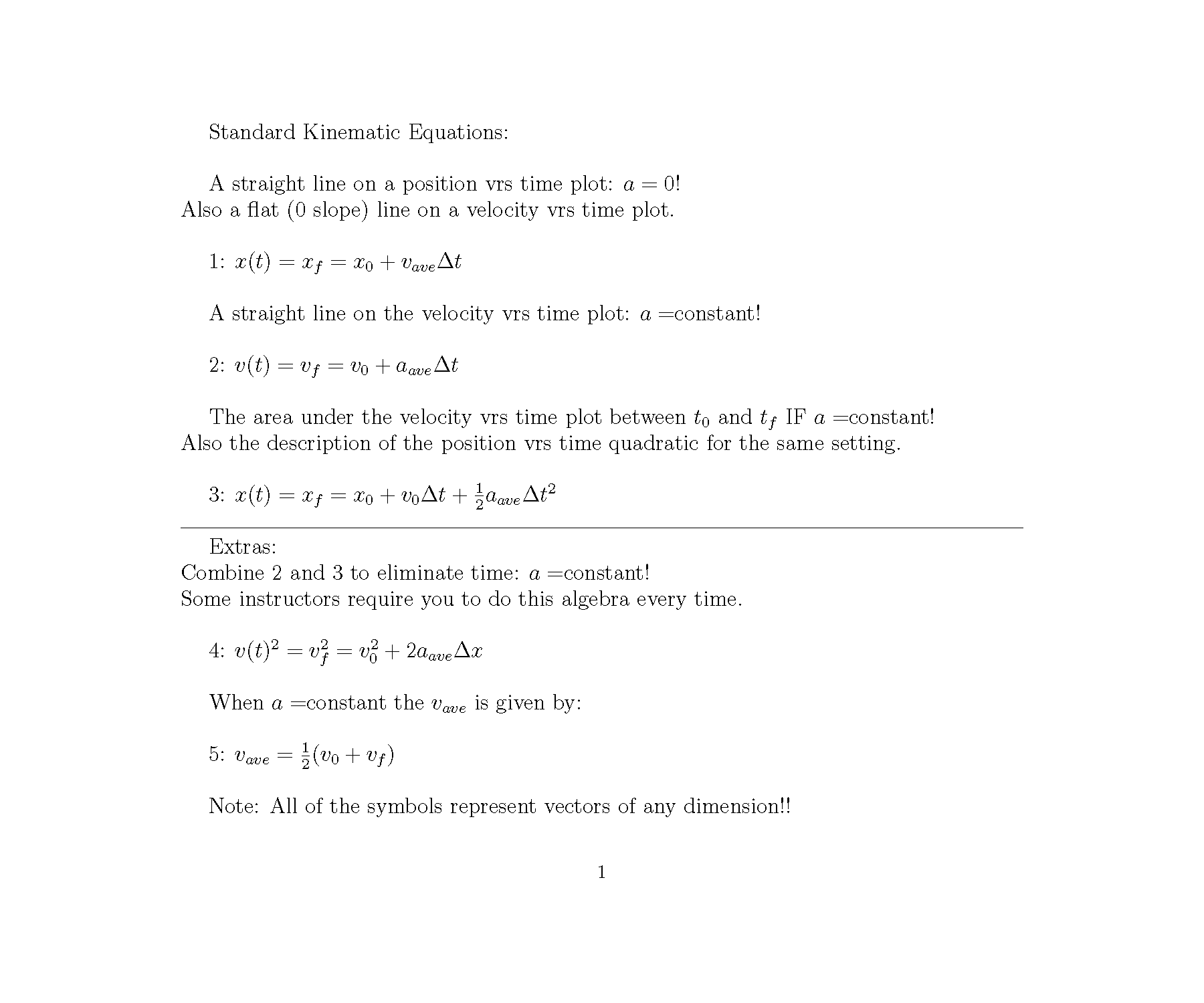Model for Solving Kinematics Problems (1D and 2D)
(Items in blue are extensions that happen in 2D situations)
1. Sketch the problem indicating all information explicitly or implicitly contained in the problem. Note, but do not worry about, the apparent goal of your problem solving.
2. Define the coordinate axes for your problem along with choosing + and – directions and the origin. If there is more than one object involved create labels for the kinematic variables which allow you to keep them straight in your mind and in your calculations. In problems where gravity is the only force acting on the object (because we choose to neglect the minor effect of air drag) it is wise to choose a coordinate system in which one axis is aligned with the force of gravity. This assures that there is no acceleration along the axis perpendicular to the direction of gravity.
2a. [ In the long run you will probably merely visualize this step and move directly to the mathematical representation but for the time being this is an important step to develop your thinking and understanding ] Sketch the position vrs time and velocity vrs time plots for each coordinate axis in your setting. Label the features, including areas under curves, on the graphs that you know and notice if there are particular points that could be determined from the graphs. Consider if you can write down the mathematical description for each of the graphs. These mathematical descriptions are equivalent to the representation you will develop in step 4!
3. In some fashion organize the kinematic information you have so it is evident what you do and don’t know. A tabular form is a common successful strategy for doing this. It is particularly important to be sure you know whether the acceleration if each object is 0, constant, or varying. We only have the tools to deal with the first two cases. Be careful to keep the kinematic data for the two coordinate directions you have selected clearly separate.
Many times some aspect of the problem (the initial velocity is a common case) does not lie along your chosen axes. If this case you will need to stop and determine the components of that vector quantity along the axes you have chosen. Once you have done so clearly record that separation in your data. Remember that you may need to reassemble those vector components at some later point in the problem.
Below is a sample of the table of data you might create:
| xo = | yo = |
| xf = | yf = |
| vxo = | vyo = |
| vxf = | vyf = |
| ax= | ay = |
| Δt = | Δt = |
4. Consider which of the “kinematic equations” apply in your circumstance. A complete list is at the bottom of this document. From those that apply choose an equation which contains the variable or information you are seeking. If in doubt try any applicable equation and see what it tells you. As you write down an equation to try note which variables are known and which are not. At least initially you can hope that you will find an equation that has only one unknown and is hence solvable. You may find that figuring out stuff with the graphs is easier but make sure you can see how the math can take you the same place.
If you are dealing with a ballistic problem of an object moving freely through the air always start your solution by laying out the horizontal part of the problem and seeing what information can be extracted. It usually doesn’t immediately solve the problem but it costs you so little time and you will clarify which variables are unknown that it is worth the few seconds it will take.
If you find no equations that are directly solvable you must now seek a system of equations with at least two unknowns and two equations. Only practice can help you get better at this part of problem solving.
5. If your equation(s) is/are now solvable then proceed with the algebra until it is solved for your target quantity. If you are dealing with multiple equations I recommend using a substitution method for reasons I have discussed in class. Plug in the numbers, WITH UNITS, and calculate a numerical solution.
6. Consider your answer and whether it makes sense. Use the various tools we have discussed to ascertain whether your solution is reasonable.

